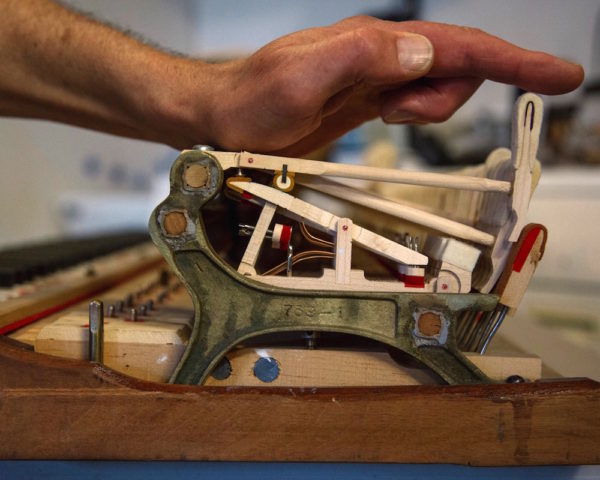No time to read it all? No problem.
Repair is obviously a thing we think a lot about. And part of thinking about it is learning about it. And if you also want to learn about repair – but it’s not your literal job to do so, and you don’t have the capacity to dive into every single thing we post – we got you. Meet our media cliffnotes: snippets of larger stories so you can sneak peek before committing to a long read.
Here’s a rundown all the media we shared in March and our favorite things we learned from each:
Repair Radio Episode 3: The Next Generation of Right to Repair (iFixIt.com): This episode interviews two teens who repair electronic devices, ages 15 and 18. (This whole conversation made me feel REAL OLD.) The younger of the guests shared that his first repair was in 2nd grade (!), soldering a remote control car. They also bring a dad into the mix to talk about letting your kids repair electronics, and creating a safe space for them to explore, learn, and make mistakes with potentially expensive items.
Fight for your right… to repair (Salon.com): This article contains a succinct and accessible rundown of the Right to Repair movement’s causes and history… and what people stand to gain from currently proposed legislation.
Restart Podcast Ep. 39: Repair and autonomy in a networked world (TheRestartProject.org): Podcast guest Alison Powell is a communications technology genius, and everything she has to say over the course of these 31 minutes is truly remarkable. This page includes a written summary of her points for a quicker download; our favorite part of the conversation was when Powell addressed the economic opportunity of making backwards-compatible software, extending the life of otherwise-functional devices.
Metro Council adopts 2030 Regional Waste Plan (OregonMetro.gov/News): Systemic 👏 local 👏 planning 👏 to 👏 address 👏 entire 👏 waste 👏 cycle 👏 including 👏 manufacture 👏
Apple makes steps toward a more flexible right to repair (iMore.com): Apple has rolled back some stipulations that formerly excluded iPhone owners from getting their devices repaired. Generally, these exclusions were based on evidence that the phone had been serviced by a third-party repairer, or that the owner had tried to repair it themselves.
The man who takes tech apart – so we can learn how to fix it (TheGuardian.com): Todd McClellan’s teardown photography chronicles the components of various modern-day devices. Featuring very cool photos of exploded electronics, and McClellan’s thoughts on the evolution of design.
Hope in the dark: an account from a Restart Party (TheRestartProject.Org): A very sweet first-person telling of a disheartened citizen’s uplifting experience of community at their local repair event.
The Rise Of The Repair Movement Is An Antidote To Dangerous Overconsumption (HuffingtonPost.co.uk): I mean, the title really does most of the heavy lifting for this blurb. Fast fashion, electronics, their toll on our world, and what can be done about it.
Super Cali optimistic right-to-repair’s negotious, even though Apple thought it was something quite atrocious (TheRegister.co.uk): California is getting a second shot at Right to Repair legislation, and a headline destined for the scrapbook. (Reading beyond the *amazing* headline will give you a decent rundown of how Right to Repair can support a competitive market, to consumer benefit.)
Repair Radio Episode 4: Interview with David Pogue and Amanda LaGrange (iFixIt.com): We loved learning from Amanda LaGrange about Tech Dump, a Minnesota-based electronics recycler, and her insights from the volume of “end of life” goods the organization receives.
And we had a couple publications of our own this month:
JD’s Shoe Repair: We’re excited to publish our first video interview of a repairer in Portland, cobbler Julie Derrick. Our writeup includes even more of JD’s story, including her perspective on running a small business in a changing city.
Magic and Design for Repair: Our second installment of the Repair Reflections series, by Joel Newman. In which Joel contemplates design’s pitfalls, possibilities, and intersections with the seemingly unknowable magic that animates our possessions – and a couple inspiring examples of present-day design for repair.
